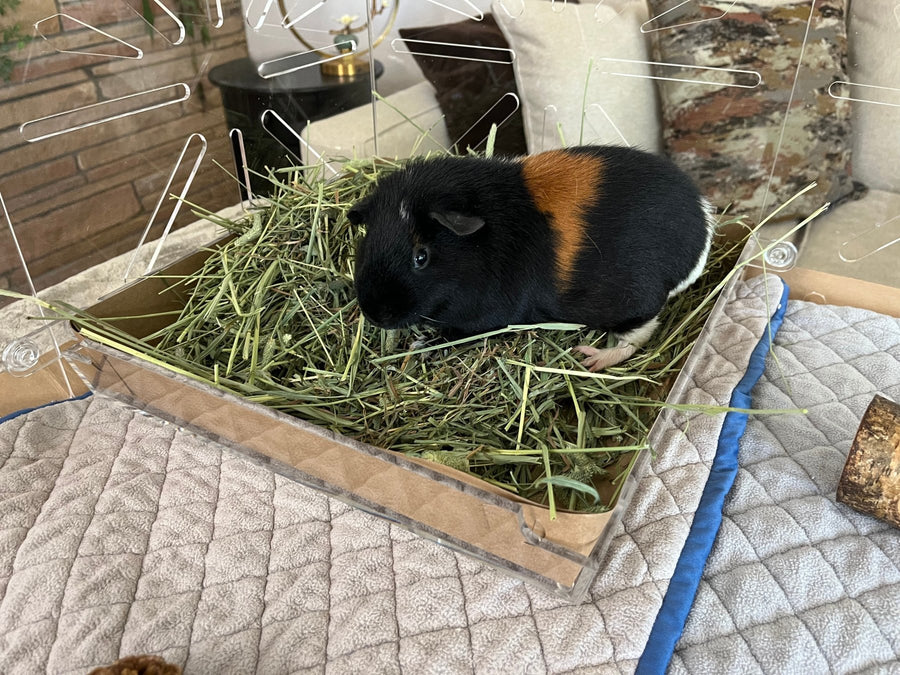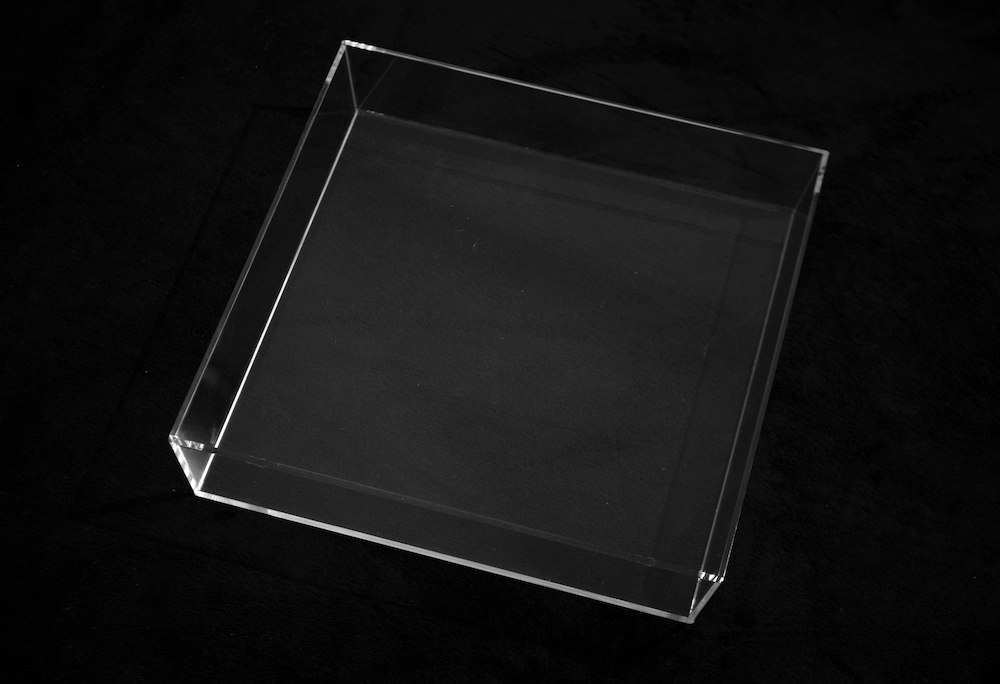Which Cut of Timothy Hay Should I Feed My Guinea Pigs?
If you’ve ever found yourself staring at a bag of hay in the pet store thinking, "Wait… what even is a ‘second cut’?!" — you’re not alone. While hay might just look like dried grass to us humans, to guinea pigs, it’s basically their everything: their food, their dental care, their entertainment, and their comfort.
But not all hay is created equal—and not all hay is right for every piggy.
In this guide, we’re diving deep into the world of 1st, 2nd, and 3rd cut Timothy hay so you can choose the best one based on your guinea pig’s age, health, personality, and chewing habits.

Why Is Hay So Important for Guinea Pigs?
Before we jump into the cuts, let’s take a second to appreciate hay for what it truly is: a guinea pig essential.
Guinea pigs need unlimited access to hay 24/7. It makes up about 80% of their diet and plays a crucial role in:
-
Keeping their digestive system moving smoothly
-
Wearing down constantly growing teeth
-
Providing mental enrichment
-
Creating soft bedding or hidey nest material
No matter how much fresh produce or pellets you offer, nothing replaces hay!
So, What Are the “Cuts” of Timothy Hay?
“Cut” refers to when the hay was harvested during the growing season, and each cut has its own texture, color, and nutritional profile. Let’s break them down:
🥇 1st Cut Timothy Hay
What it’s like:
-
Coarse and stem-heavy
-
High in fiber, lower in fat and protein
-
Tougher texture with lots of seed heads
Best for:
-
Guinea pigs who need extra help with dental wear
-
Overweight piggies who need a lower-calorie option
-
Piggies who love crunchy hay
Downside:
It’s less soft and tasty, so picky piggies might snub it. Also, the coarse texture can poke sensitive piggy feet if used as bedding.
🥈 2nd Cut Timothy Hay (The Goldilocks Hay)
What it’s like:
-
A balance of stems, leaves, and soft bits
-
Medium fiber, fat, and protein levels
-
Greener, softer, and super fragrant
Best for:
-
Pretty much all guinea pigs!
-
Picky eaters
-
Guinea pigs of all ages, from babies to seniors
Downside:
Honestly? Not much. This is the most versatile and widely recommended cut—great for daily feeding and easy on the belly and teeth.
🥉 3rd Cut Timothy Hay
What it’s like:
-
Super soft, leafy, and delicate
-
Lower in fiber, higher in fat
-
Few stems, very fine texture
Best for:
-
Elderly guinea pigs or those with dental issues
-
Guinea pigs recovering from illness or surgery
-
Very picky eaters who turn their noses up at anything crunchy
Downside:
Because it’s low in fiber and so soft, it won’t wear down teeth as effectively. It’s also more likely to spoil quickly if left out too long due to the finer particles.
Which Cut Should You Feed?
Every guinea pig is unique, so here’s a quick guide based on different piggy needs:
| Piggy Type | Recommended Cut |
|---|---|
| Young & healthy | 2nd cut |
| Picky eater | 2nd or 3rd cut |
| Overweight | 1st cut |
| Senior or dental issues | 3rd cut (with supervision) |
| Needs dental support | 1st cut or mixed 1st/2nd cut |
You can also mix cuts to provide variety and nutritional balance. A combo of 1st and 2nd cut, for example, gives the fiber and crunch of 1st cut with the tastiness of 2nd.
Bonus Tips for Hay Success
-
Keep it fresh: Store hay in a dry, breathable container (like a bin with a lid slightly cracked or a hay bag).
-
Offer variety: Sometimes switching brands or mixing cuts can reignite your piggy’s interest in hay.
-
Watch for waste: If your guinea pigs are wasting lots of hay, try giving smaller amounts more frequently or changing how you serve it (racks, hay balls, fleece pockets).
-
Check for quality: Good hay should smell sweet and fresh, not musty or dusty. Avoid anything yellow, moldy, or sharp.
A Quick Note on Alfalfa Hay
While this post is all about Timothy hay (which is ideal for adult guinea pigs), it’s worth mentioning alfalfa hay. It’s richer in calcium and protein, and typically reserved for:
-
Baby guinea pigs under 6 months
-
Pregnant or nursing mamas
-
Guinea pigs recovering from illness or surgery
Just be cautious—feeding adult pigs too much alfalfa can lead to bladder stones due to excess calcium.
Final Thoughts: Hay Is Love, Hay Is Life
Timothy hay isn’t just a snack—it’s a vital part of your guinea pig’s everyday life. Whether you go with crunchy 1st cut, versatile 2nd cut, or soft and gentle 3rd cut, what matters most is consistency and quality.
And hey—if you're planning to adopt more guinea pigs (because we know you’re obsessed now 🐹), just remember that more pigs = more hay = more happy piggies.
P.S. If you ever need to size up your habitat to fit more hay-loving floofs, we’ve got handy expansion kits ready when you are—just sayin’.
FAQs
Q: Can I switch between hay cuts, or will it upset my guinea pig’s stomach?
Yes, you can rotate or mix hay cuts! Just keep an eye on their digestion and always introduce new textures slowly if your piggies are sensitive.
Q: My guinea pig is ignoring their hay—what do I do?
Try offering a different cut or mixing in herbs like dried chamomile or rose petals to entice them. Sometimes, just switching to a fresher or greener batch makes all the difference.
Q: Is it okay to use hay as bedding?
Yep—but choose softer cuts like 2nd or 3rd for comfort. Just make sure it's clean and dry. Some piggies love building nests out of it!









Leave a comment